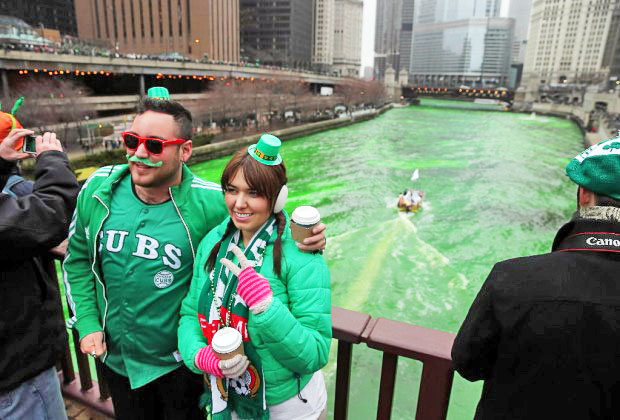Q: The tradition of dyeing the Chicago River green for Saint Patrick’s Day: How did it start?
A: Like so many good stories about Chicago, this one begins with crap.
Early in his administration, Mayor Richard J. Daley authorized massive development along the riverfront, which necessitated cleaning up the sewage-choked water below. To find out which buildings were sending waste into the river, city crews began putting a special green dye into the sewage system to trace the origin of discharged water—anywhere the river turned green, someone was dumping waste illegally.
In December 1961, Stephen Bailey, general chairman of the six-year-old Saint Patrick’s Day parade, saw the dye and reportedly shouted, “Eureka!” He ordered the entire river colored green for the next parade, a feat accomplished by dumping 100 pounds of the dye into it. The color lasted an entire week. (Today 40 pounds of dye are used, lasting four to five hours.)
Bailey didn’t stop there—or at least he didn’t want to. In 1965, he proposed painting the Wrigley Building with “easily removable” green dye. The idea was shot down. “I don’t think P.K. [Wrigley] likes the Irish,” he told the Tribune.




Comments are closed.